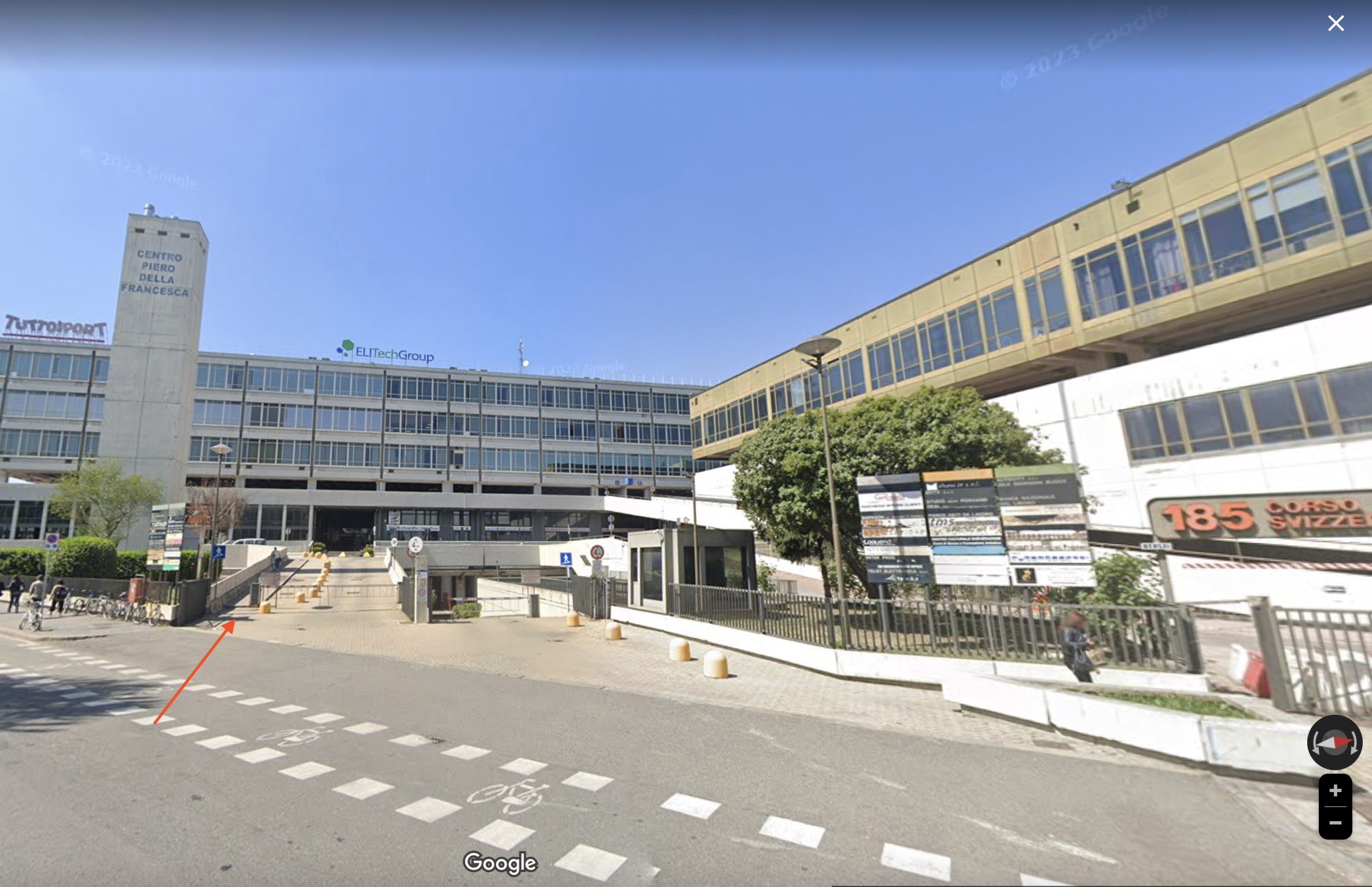Planned Events
Travel information for two EUROHPC events in Torino
5-6 June 2023: EuroHPC ADMIRE project General Assembly
6-7 June 2023: EuroHPC project coordination meeting
Please, Fill out the form to let us know if you will participate in the events and other initiatives
Hosted by Parallel Computing group, Computer Science, University of Torino
How to get to the event?

The events will be held on the 3rd-floor staircase L, in the Conference Room.
The most convenient access to reach the 3rd floor located on the L staircase of the Computer Science Department is Corso Svizzera 185.
The red arrow indicates the entrance you will need to take.
Continuing straight you will find a garden, run along on the right and going straight ahead, you will find the elevator.
Once you get to the third floor, three stand-ups will show you the way to the conference room.
Travel to Turin
By air through Sandro Pertini – Caselle International Airport
Turin’s “Sandro Pertini” Airport is 16 kilometres northwest of the town centre and directly connects all major European cities and hubs. Intercontinental connections to/from Turin are easily guaranteed, primarily through Frankfurt, Munich, Paris and Rome. The city centre can be reached by bus (~50 min) or taxi (~ 30 min) from the airport. The railway Caselle-Torino is currently not available due to major renovation works.
By air through Malpensa Intercontinental Airport
Located at about 140 km from Turin, Malpensa offers daily European and intercontinental flights. It has two terminals serviced by a shuttle (departures every two hours) connecting the Malpensa Airport with Turin and stopping at the Porta Susa railway station. The trip takes about two hours. Tickets may be reserved in advance or bought at the airport terminal (next trip availability can generally be assumed but is not guaranteed); tickets may be purchased on line.
Local transportation
Turin is served by an effective public transportation system comprising buses, shuttles, trams and a fully automated subway line. Interconnections are guaranteed with all the railway stations and with Turin’s Airport.
There are some car-sharing services available, but using a car in Turin is not recommended; it can be stressful, and parking can be difficult.
The bike and electric scooter are great ways of exploring the city and its surroundings, although bikers should stay alert and away from the heavily trafficked roads. Several free-floating bike and scooter-sharing services are active in Turin.
More information can be found on the web pages of these services as well as on this (automatically translated) page of Torino Turismo.
Generally, Turin can be considered a safe city, but watch out for pickpockets, especially on local transport.
By rail
Turin has two main railway stations, Porta Susa and Porta Nuova, with most trains stopping at both. The city is very well linked both to the Italian railway system and to that of neighbouring countries. High-speed trains connect Turin with all the major Italian cities (Turin-Rome takes approximately 5 hours).
Accommodation
The Computer Science Department is located in a building outside the city centre, but it can be easily reached using Tram lines 3 and 9.
Torino city centre is a nice place to walk and stay, and it is the best bet to stay in Torino. Some hotels are within walking distance of the meeting room in the Computer Science Department of the University of Torino.
Torino city center
Walking distance from the meeting room
The City

Turin is sometimes called the “cradle of Italian liberty” for having been the birthplace and home of notable politicians and people who contributed to the Renaissance, such as Cavour, a leading figure in the movement toward Italian unification, and many of the protagonists of Italian political and social life in the 20th century, among the others, Antonio Gramsci, Piero Gobetti, and Palmiro Togliatti. The city used to be a major European political centre, being Italy’s first capital in 1861 and home to the House of Savoy, the Italian royal family.
Turin (Torino in Italian) is an important business and cultural centre in northern Italy, the capital of the Piedmont region, located mainly on the left bank of the Po River, surrounded by the western Alpine arch. The city has a rich culture and history and is known for its numerous art galleries, restaurants, churches, palaces, opera houses, piazzas, parks, gardens, theatres, libraries, museums and other venues. Turin is well known for its baroque, rococo, neo-classical, and Art Nouveau architecture. Much of the city’s public squares, castles, gardens and elegant palazzi, such as Palazzo Madama, were built in the 16th and 18th centuries, after the capital of the Duchy of Savoy (later Kingdom of Sardinia) was moved to Turin from Chambéry (nowadays in France), as part of the urban expansion.
Turin hosts prestigious museums and monuments, including the Egyptian Museum (the oldest museum entirely dedicated to Ancient Egypt and the second largest after Cairo’s) and the Mole Antonelliana (featured on the Italian 2-cent euro coins). Turin’s several monuments and sights make it one of the world’s top 250 tourist destinations. Turin is also well known as the home of the Shroud of Turin, the football teams Juventus F.C. and Turin F.C., the headquarters of automobile manufacturers FIAT, Lancia and Alfa Romeo, and as host of the 2006 Winter Olympics. Several International Space Station modules, such as Harmony, Tranquility, and Columbus, were also manufactured at the Thales Alenia Space factory in Turin.
Turin is the only Italian city enlisted in the New York Times “52 Places to Go in 2016” guide.
Restaurants
Torino and its surroundings host over 40 Michelin-starred restaurants; you can easily find them using a guide. In general, randomly picking a restaurant, the likely to have a good dinner is very high.
Vegan & celiac
- Soul kitchen (Crudist+Vegan €€€)
- Salsamentario (Vegan €€€)
- Panperfocaccia (Celiac pizzeria (certified, with separate oven €)



